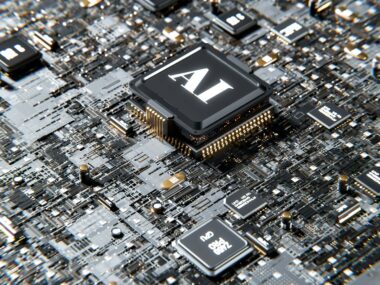In today’s digital age, technology is transforming various sectors, and education is no exception. One of the most intriguing advancements making waves in classrooms around the world is Augmented Reality (AR). By overlaying digital information onto the physical world, AR offers an immersive learning experience that enhances understanding and engagement. This post explores the profound impact of augmented reality on education, targeting students, educators, and tech enthusiasts eager to learn about this transformative technology.
What is Augmented Reality?
Augmented Reality (AR) is a technology that superimposes digital content, such as images, videos, and sounds, onto the real-world environment through devices like smartphones, tablets, or AR glasses. Unlike Virtual Reality (VR), which creates a fully immersive digital environment, AR enhances the real world by adding digital elements to it. This unique capability makes AR particularly useful in educational settings, where it can bring abstract concepts to life and create interactive learning experiences.
AR in Education: A Game Changer
Enhancing Student Engagement
One of the most significant benefits of AR in education is its ability to capture students’ attention and keep them engaged. Traditional teaching methods can sometimes fall short in making subjects like history, science, or mathematics exciting. However, AR can transform these subjects into captivating, interactive experiences. For instance, history lessons can be enriched with 3D models of ancient artifacts, and biology classes can include detailed, interactive visualizations of the human body.
Making Learning Interactive
Interactive learning is proven to improve information retention and understanding. AR enables students to interact with the subject matter directly, fostering a hands-on learning environment. For example, in a chemistry class, students can use AR to visualize molecular structures and chemical reactions in 3D, making it easier to grasp complex concepts. This level of interactivity encourages active participation and sparks curiosity, driving students to explore subjects more deeply.
Personalizing Education
Every student learns differently, and AR offers the flexibility to cater to individual learning styles. Educators can use AR to create personalized learning experiences tailored to each student’s needs. For instance, visual learners can benefit from 3D visualizations, while kinesthetic learners can engage in interactive simulations that require physical interaction. This personalized approach can help bridge the gap between different learning paces and preferences, ensuring that no student is left behind.
Practical Applications of AR in Education
AR in STEM Education
Science, Technology, Engineering, and Mathematics (STEM) subjects often involve complex concepts that can be challenging to visualize. AR can simplify these subjects by providing 3D models and simulations that make abstract ideas more tangible. For example, students can use AR to explore the solar system, conduct virtual dissections, or design and test engineering projects in a risk-free virtual environment.
AR in Language Learning
Language learning can benefit immensely from AR by creating immersive language experiences. AR apps can overlay translations onto real-world objects, helping students learn vocabulary in context. Additionally, interactive AR stories and games can make language learning more engaging and fun, encouraging students to practice and improve their language skills continuously.
AR in History and Geography
AR can bring history and geography lessons to life by allowing students to explore historical events and geographical locations virtually. For example, students can take a virtual tour of ancient Rome, witness the construction of the pyramids, or explore the Amazon rainforest—all from the comfort of their classroom. These immersive experiences can make learning more memorable and impactful.
Challenges and Considerations
Accessibility and Cost
While AR offers numerous benefits, accessibility and cost remain significant challenges. Not all schools have the budget to invest in AR devices and applications, and not all students have access to the necessary technology at home. Addressing these disparities is crucial to ensure that all students can benefit from AR-enhanced education.
Teacher Training
Integrating AR into the curriculum requires educators to be well-versed in using the technology effectively. This necessitates comprehensive training programs to help teachers understand how to incorporate AR into their lessons seamlessly. Continuous professional development is essential to keep up with the rapidly evolving technology landscape.
Content Quality
The effectiveness of AR in education depends on the quality of the content provided. Poorly designed AR experiences can lead to frustration and disengagement, negating the potential benefits. Collaborating with educational content developers and leveraging high-quality AR platforms is crucial to creating meaningful and impactful learning experiences.
The Future of AR in Education
The potential of AR in education is vast, and its impact will continue to grow as the technology matures. Future advancements in AR could lead to even more immersive and interactive learning environments, further enhancing the educational experience. Additionally, as AR becomes more accessible and affordable, its integration into classrooms worldwide is likely to increase, making high-quality education more inclusive and equitable.
Conclusion
Augmented Reality is revolutionizing education by making learning more engaging, interactive, and personalized. From enhancing student engagement to simplifying complex concepts, AR offers a myriad of benefits that can transform the educational landscape. While challenges remain, the future of AR in education looks promising, with the potential to create a more immersive, inclusive, and effective learning experience for students everywhere.
As we embrace this exciting technology, educators, students, and tech enthusiasts need to stay informed and explore the possibilities that AR brings to the table. By harnessing the power of augmented reality, we can pave the way for a brighter, more innovative future in education.
Are you excited about the future of education with AR? Share your thoughts and experiences in the comments below! And don’t forget to subscribe to our newsletter for more insights and updates on the latest in educational technology.






